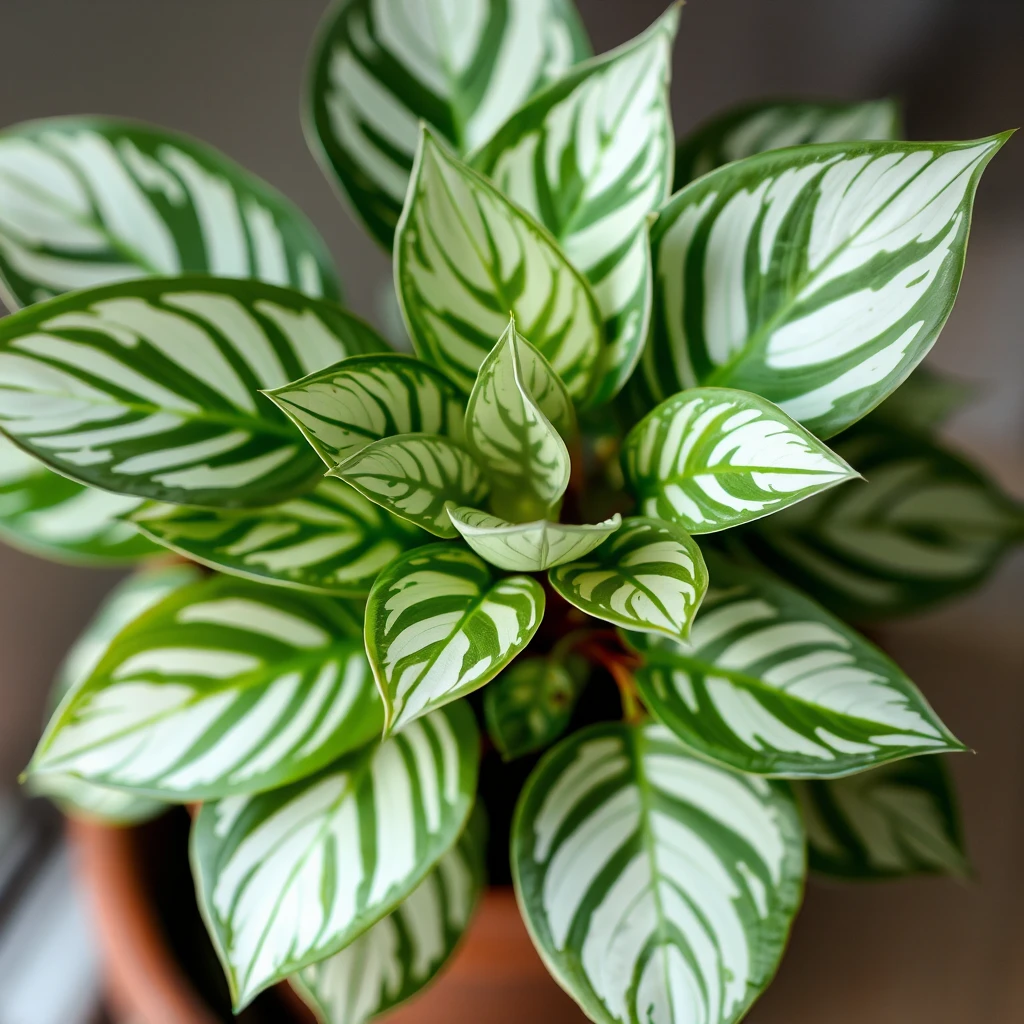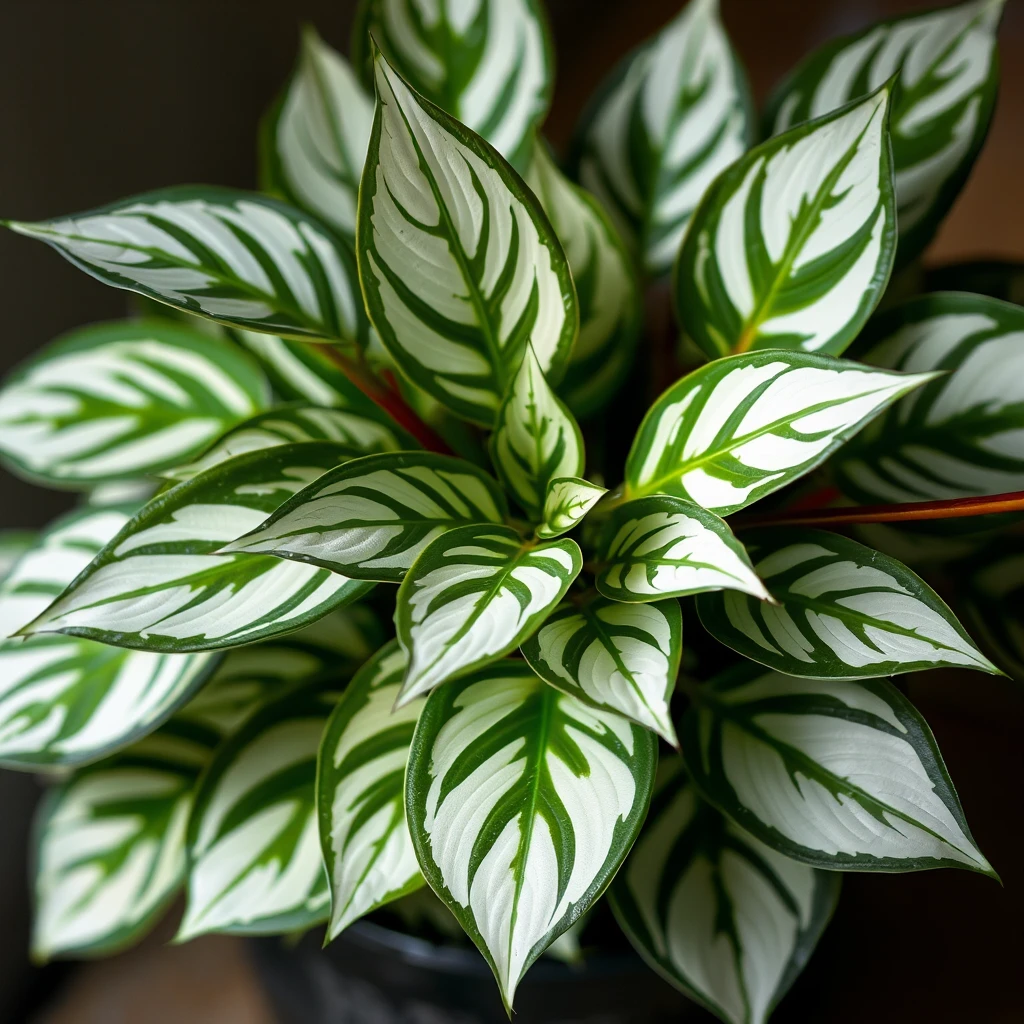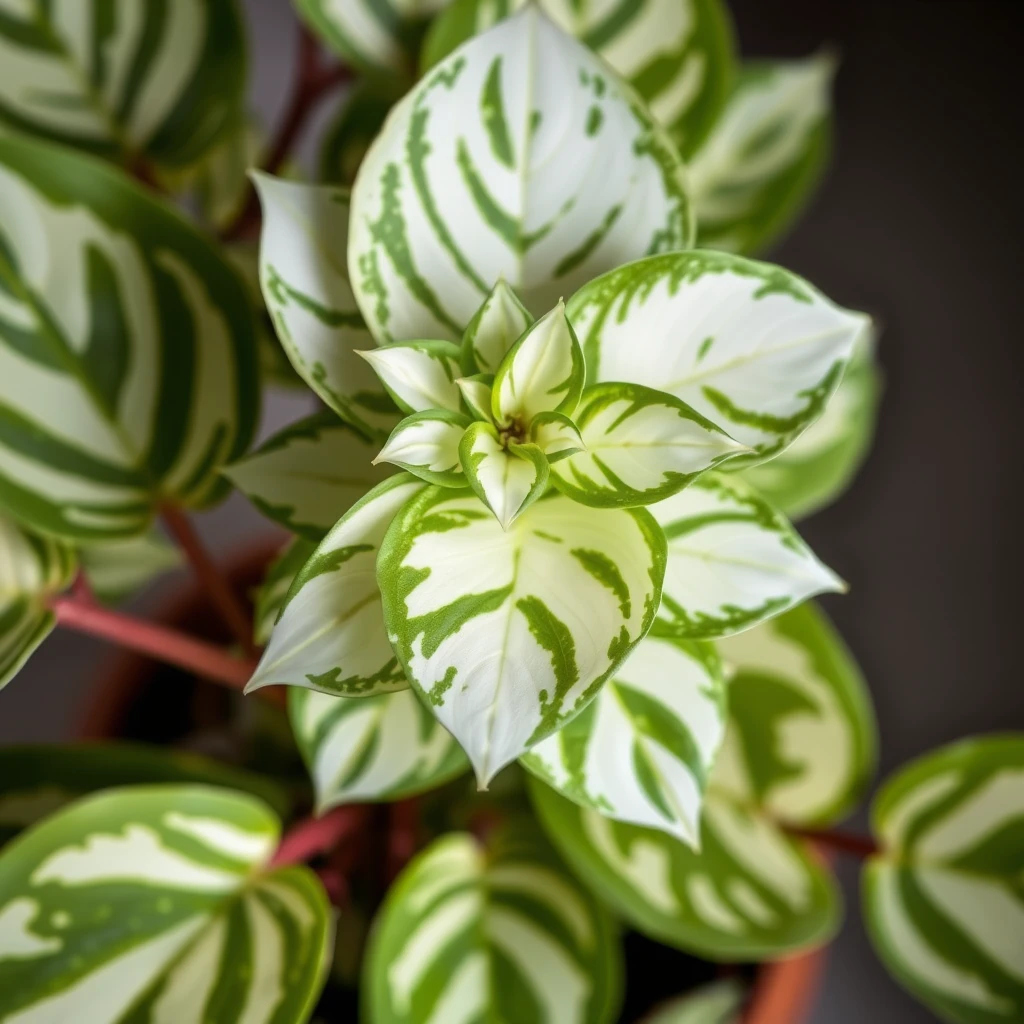
Ever dream of adding a touch of tropical magic to your space? Meet the Hawaiian Snow Bush, a plant that’s as charming as its name suggests. With its soft, pastel-hued leaves and delicate, cascading branches, it’s like having a slice of paradise right in your backyard—or even your living room.
But don’t be fooled by its ethereal beauty. This shrub isn’t just another pretty face; it’s surprisingly easy to care for and incredibly versatile. Whether you’re a seasoned gardener or someone who struggles to keep succulents alive, there’s something for everyone to love about this plant.
Curious about what makes the Hawaiian Snow Bush so irresistible? We’ve got all the secrets—how to nurture it, where it shines best, and why it deserves a special place in your collection. Keep reading to discover the magic behind this tropical treasure and how it can transform any space into an island escape.

Understanding the Hawaiian Snow Bush
Scientific Name and Common Names
The Hawaiian Snow Bush, scientifically known as Breynia disticha, is an enchanting plant celebrated for its ornamental appeal. It’s sometimes referred to as the “Snow-on-the-Mountain” or simply “Snow Bush,” a nod to its frosty, variegated foliage. Despite its tropical roots, its delicate appearance evokes the imagery of snow-covered landscapes, making it a poetic addition to gardens and indoor spaces alike.
Description of Its Appearance, Including Foliage and Growth Habit
The Hawaiian Snow Bush boasts a mesmerizing array of small, oval leaves that shimmer in hues of green, cream, and soft pink. This intricate patterning creates a kaleidoscope of color that changes subtly with the seasons. Its slender, arching stems contribute to its airy and graceful silhouette, making it an excellent choice for softening the edges of a landscape or adding visual interest indoors. When mature, the plant typically reaches a height of 3 to 4 feet, though it can be pruned to maintain a more compact size.
Origin and Natural Habitat
The Hawaiian Snow Bush hails from the warm, humid regions of the Pacific, thriving in tropical and subtropical climates. While its name suggests a connection to Hawaii, its origins lie in areas such as New Guinea and Southeast Asia. In its natural habitat, the plant grows in rich, well-drained soil under the dappled shade of taller vegetation. This environment mimics the filtered sunlight and high humidity it craves, conditions that are easily replicated in gardens or as part of an indoor collection.
With its unique beauty and fascinating background, the Hawaiian Snow Bush remains a favorite for those seeking a plant that combines elegance with a touch of exotic flair.
Essential Care Tips for the Hawaiian Snow Bush
Watering Needs
Frequency and Quantity of Watering
Proper hydration is key to ensuring the health and vibrancy of your Snow Bush. As a tropical plant, it thrives in consistently moist soil, but not soggy conditions. Ensure that you water the plant deeply whenever the top inch of soil feels dry when touched. During the growing season, typically spring and summer, it may require watering 2–3 times per week, depending on the climate and placement. If you’re cultivating your Snow Bush outside, keep an eye on rainfall patterns, as natural precipitation can reduce the need for supplemental watering.
In cooler months, when growth slows, scale back to weekly watering, allowing the soil to dry out slightly between sessions. This adjustment prevents unnecessary water accumulation and supports the plant’s natural rhythm.
Importance of Balancing Hydration to Avoid Overwatering
While the Hawaiian Snow Bush enjoys moisture, overwatering can be detrimental, leading to root rot and other fungal issues. Striking the right balance is crucial. Ensure the pot or planting site has excellent drainage to prevent standing water, which can suffocate the roots. For indoor care, a pot with drainage holes is essential.
Pay close attention to the plant’s leaves—yellowing or wilting can signal excess water. On the other hand, browning leaf tips may indicate underwatering, highlighting the delicate balance required in proper Hawaiian Snow Bush care.
By understanding its specific hydration needs and adapting your watering routine accordingly, you can create an environment where the Snow Bush thrives, showcasing its lush, colorful foliage year-round.
Light Requirements
Ideal Sunlight Exposure (Direct vs. Indirect)
The Hawaiian Snow Bush flourishes in bright, indirect light. While it can tolerate short periods of direct sunlight, prolonged exposure to harsh sun can scorch its delicate foliage, leading to unsightly brown spots and faded colors. In its natural habitat, the plant enjoys dappled sunlight filtering through the canopy of taller trees, mimicking the gentle light it prefers.
For indoor environments, place your Hawaiian Snow Bush near a window with sheer curtains or blinds to diffuse the sunlight, ensuring it receives ample light without being overwhelmed by the intensity of direct rays. When kept outside, consider positioning it in a spot with filtered sunlight, such as under the shade of a larger plant or structure. Morning sun is usually the best option for this plant, as the cooler hours reduce the likelihood of sunburn.
How to Adapt Care for Indoor vs. Outdoor Settings
When cultivating a Hawaiian Snow Bush indoors, maintaining the right light levels can be a bit more challenging due to varying room conditions. Ideal placements include bright living rooms or sunrooms with access to natural light, but away from the direct heat of a heating vent or draft. In these settings, Hawaiian Snow Bush care involves careful monitoring to ensure the plant isn’t deprived of light, which can result in spindly growth and a loss of vibrancy.
For those growing the Hawaiian Snow Bush outside, exposure to natural light can be more forgiving, as long as the plant is shielded from the intense midday sun. A partially shaded area will offer the ideal environment, allowing the plant to soak up enough light without the risk of sunburn. If growing outdoors, always be mindful of changing seasons and adjust the plant’s placement as necessary to maintain optimal light conditions.
Whether indoors or outdoors, understanding and adapting the light requirements of the Hawaiian Snow Bush ensures it remains healthy, vibrant, and visually striking.

Soil and Fertilization
The Best Soil Types for Optimal Growth
For the Hawaiian Snow Bush to thrive, it requires well-draining, loamy soil rich in organic matter. A slightly acidic to neutral pH, between 6.0 and 7.0, is ideal for its growth. If cultivating the Hawaiian Snow Bush outside, ensure the soil is light and airy to prevent water retention, which can lead to root rot. An effective combination of peat, perlite, and pine bark provides an optimal balance of drainage and moisture retention, which supports robust root growth.
For indoor care, a standard potting mix with added perlite or sand works well, improving aeration and drainage. The goal is to avoid dense, heavy soils that might suffocate the roots.
Recommended Fertilizers and Feeding Schedule
To encourage robust growth and vibrant foliage, regular feeding is essential for the Hawaiian Snow Bush. A balanced, water-soluble fertilizer with equal proportions of nitrogen, phosphorus, and potassium (NPK 10-10-10) is ideal during the growing season, typically spring through summer. Fertilize every 4-6 weeks, ensuring the plant receives adequate nutrients without being overwhelmed.
In the dormant months, reduce fertilization to every 8 weeks or stop altogether. Over-fertilizing, especially during the cooler seasons, can result in weak growth or nutrient burn. For those growing the Hawaiian Snow Bush outside, natural soil amendments like compost can also provide vital nutrients, supporting its health and vitality.
Temperature and Humidity
Ideal Temperature Range for Thriving Growth
The Hawaiian Snow Bush thrives in warm environments, ideally between 60°F and 85°F (15°C and 29°C). This tropical plant is sensitive to cold temperatures, and anything below 50°F (10°C) can cause significant stress, potentially damaging its foliage and inhibiting growth. For those growing the Hawaiian Snow Bush outside, ensure it is shielded from frost or extreme temperature fluctuations. When grown as a Hawaiian snow bush bonsai, it’s crucial to maintain a consistent temperature, as rapid shifts can lead to stunted development or leaf drop.
Importance of Maintaining Humidity Levels, Especially in Dry Climates
Humidity plays a critical role in the health of the Hawaiian Snow Bush. Native to humid tropical regions, this plant requires moisture in the air to truly thrive. Ideal humidity levels range from 60% to 80%, a challenge in dry climates. To maintain these levels indoors, consider using a humidifier or placing the plant on a humidity tray filled with pebbles and water. For outdoor care, ensure that the Hawaiian Snow Bush outside is situated in an area where it can benefit from natural humidity, such as near a water feature or in a shaded area that retains moisture.
Failing to maintain adequate humidity can cause the plant’s leaves to dry out and curl. In some cases, prolonged exposure to dry air may weaken the plant’s resilience, affecting its overall vigor. Additionally, the Hawaiian Snow Bush is considered toxic to cats, so it’s essential to monitor pets around this beautiful, but potentially harmful, plant.

Encouraging Healthy Growth
When and How to Prune for Shape and Health
Pruning the Hawaiian Snow Bush is essential to maintain its aesthetic appeal and promote healthy growth. For optimal results, prune the plant in early spring, just before the new growth begins. This is the best time to remove any dead or leggy branches, as it allows the plant to direct its energy into fresh, vibrant foliage. Use clean, sharp pruning shears to make precise cuts, ensuring that the plant maintains a balanced, symmetrical shape. Regular pruning encourages fuller growth and helps prevent overcrowding, allowing light and air to reach all parts of the plant.
Tips on Removing Dead or Diseased Foliage
Removing dead or diseased foliage is crucial for maintaining the health of the Hawaiian Snow Bush. Discoloration or browning of leaves may indicate pest infestations or fungal infections. Carefully inspect the plant for signs of distress, such as wilting or abnormal spots. Cut away any affected areas, making sure to dispose of them properly to prevent the spread of disease. For plants grown as a Hawaiian snow bush bonsai, it’s especially important to remove any weak or damaged stems to maintain the miniature tree’s overall strength and appearance.
When practicing Hawaiian Snow Bush care, always ensure that you sanitize your pruning tools between cuts to avoid transferring any pathogens. Additionally, keep an eye on the Hawaiian Snow Bush outside, as outdoor plants may be more susceptible to environmental stresses and pests. For those in warmer regions like Arctic Snow Bush care in Florida, monitoring growth and pruning becomes even more vital due to rapid seasonal changes.
Common Issues and How to Address Them
The Hawaiian Snow Bush is prone to a few common pests, such as aphids, spider mites, and scale insects. These pests can weaken the plant and cause yellowing or wilting of leaves. To address these issues, gently wipe the leaves with a damp cloth or apply insecticidal soap to eliminate the infestation. Fungal diseases, like powdery mildew, can also affect the plant, especially in high humidity. Ensure good air circulation and remove any affected leaves promptly.
Preventative Measures to Keep Your Plant Healthy
To prevent pests and disease, practice proper Hawaiian Snow Bush care by regularly inspecting your plant for any signs of distress. Keep your plant in optimal conditions, whether indoors or as Hawaiian Snow Bush outside, ensuring it has enough light, water, and humidity. For those growing a Hawaiian snow bush bonsai, be particularly cautious, as smaller plants may be more susceptible to infestations. Using organic pesticides can help maintain a healthy environment, reducing risks. Also, be mindful that the Hawaiian Snow Bush is toxic to cats, so place it away from curious pets. For those in warmer climates, like Arctic Snow Bush care in Florida, keep an eye on humidity levels to avoid fungal growth.
Propagating the Hawaiian Snow Bush
Different Propagation Methods
The Hawaiian Snow Bush can be propagated through stem cuttings or air layering. Cuttings are the most common method, where a healthy 4-6 inch piece of stem is taken from the plant.
Step-by-Step Guide to Successful Propagation
- Select a healthy, disease-free stem from your Hawaiian Snow Bush.
- Trim the stem just below a leaf node.
- Place the cutting in a container with a well-draining potting mix.
- Keep the cutting in a humid environment, ensuring it gets indirect light.
- After several weeks, roots are expected to develop, allowing for the transplantation of the new plant.
For those growing the Hawaiian Snow Bush outside or as a Hawaiian snow bush bonsai, remember that cuttings should be kept in warm, humid conditions for best results. Hawaiian Snow Bush care also includes monitoring pets, as the plant is toxic to cats.
Repotting and Transplanting
Signs It’s Time to Repot Your Hawaiian Snow Bush
If the roots of your Hawaiian Snow Bush are emerging from the drainage holes or the plant has outgrown its current container, it’s time to repot. Additionally, if the growth slows or the plant becomes top-heavy, it may indicate that the roots have become crowded.
Tips for Selecting the Right Pot and Soil
Choose a pot that’s 1-2 inches larger in diameter than the current one, ensuring it has drainage holes. For soil, a well-draining mix is essential for Hawaiian Snow Bush care, especially when growing it as a Hawaiian snow bush bonsai. Opt for a mix that contains perlite or sand to improve aeration and drainage. If growing the Hawaiian Snow Bush outside, make sure the soil is loose and rich in organic matter, ideal for healthy root development. Be mindful that the plant is toxic to cats, so consider placement accordingly.

Creative Uses and Benefits
How to Use Hawaiian Snow Bush in Landscaping or Indoor Décor
The Hawaiian Snow Bush adds a vibrant touch to both outdoor and indoor spaces. When planted outside, it thrives as an ornamental shrub, creating a stunning focal point with its striking variegated leaves. For a more compact display, consider growing a Hawaiian snow bush bonsai, which adds elegance to tabletops or shelves.
Its Role in Enhancing Spaces and Creating Visual Appeal
This plant enhances visual appeal by providing contrast with its bold foliage, making it perfect for creating dynamic landscapes. In Hawaiian Snow Bush care, the plant can be used to complement other tropical or subtropical plants. However, remember that the Hawaiian Snow Bush is toxic to cats, so placement should be considered carefully in households with pets. For Arctic Snow Bush care, particularly in Arctic snow bush Florida, the plant can be used to introduce a lush, tropical feel in diverse climates.
Conclusion
Proper Hawaiian Snow Bush care includes providing the right light, water, and humidity. Whether it’s grown outside or as a Hawaiian snow bush bonsai, the plant thrives with well-draining soil and regular pruning. Pay attention to temperature and humidity levels, especially in dry climates. Always ensure that your plant is protected from pests and diseases while monitoring its growth.
The Hawaiian Snow Bush is a versatile and stunning addition to any space, from vibrant outdoor gardens to elegant indoor displays. Explore its beauty, but be mindful that it is toxic to cats. For those in warmer climates, Arctic Snow Bush care in places like Arctic snow bush Florida offers a unique tropical charm.
FAQ
What are the care requirements for a Hawaiian snow bush?
The Hawaiian snow bush thrives in well-draining soil, regular watering, and moderate humidity. It requires occasional pruning to maintain its shape and prevent disease. Regularly check for pests and ensure proper lighting conditions to maintain its vibrant foliage.
Does it thrive in full sun or partial shade?
The Hawaiian snow bush prefers bright, indirect light or partial shade. While it can tolerate some direct sunlight, too much exposure may scorch its delicate leaves. Providing some protection from harsh midday sun will help it flourish.
Can it be grown indoors?
Yes, the Hawaiian snow bush can be grown indoors, especially in a container or as a bonsai. It requires bright, indirect light and a stable environment with humidity. Ensure the indoor space is warm and free from drafts for optimal growth.
What is the maximum size of a snow bush?
A Hawaiian snow bush can reach up to 3 feet in height and width when grown outdoors. Indoor plants, however, tend to remain smaller. Proper pruning can help maintain a more compact size, especially for bonsai growth.
When is the best time to prune a snow bush?
Pruning should be done during the spring or early summer, just before the growing season begins. Remove any dead, damaged, or diseased growth, and trim back overgrown areas to encourage healthy new growth. Pruning too late in the season may hinder blooming.
What is the ideal watering schedule for a snow bush?
The Hawaiian snow bush prefers a moderate watering schedule. Water when the top inch of soil feels dry, ensuring the plant is never sitting in stagnant water. During the winter season, minimize watering to avoid the risk of overwatering.
Check out our latest article for more insights, and follow us on Facebook for updates! and connect with us on Instagram, Pinterest, and YouTube for more inspiration!
By : Mark


